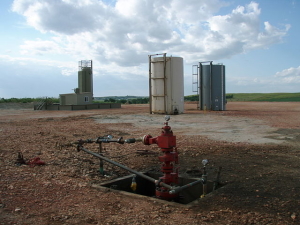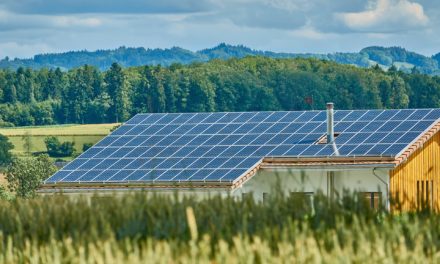I was honored to be a keynote speaker at the 3rd World Congress on Petrochemistry and Chemical Engineering held in Atlanta, Georgia, earlier this month. When I first heard about the conference, I wasn’t sure if I was exactly the right fit for an audience of chemical engineers and university professors. But, I thought they would be interested in issues related to fracking and brownfield valuation.
Greenfield Advisors has carved out a place in the industry as an expert on how environmental issues affect the valuation of real estate. In recent years we have published blog posts, written book chapters and articles in peer-reviewed journals, and presented a wide range of talks at environmental conferences on hydraulic fracturing and its effects on surrounding areas.

Wellhead after the fracking equipment has been removed, courtesy of Joshua Doubek, CC BY-SA 3.0.
In my keynote address, I looked at how fracking sites could be a drain on environmental cleanup funding. “The Impact of Abandoned Fracking Sites on Brownfield Funding” was an idea I had been looking into for some time. Much of what is talked about regarding fracking is what is going on now… the drilling, the ongoing operations, the disposal of the wastewaters, etc. But, as I noted in my address, what is going to happen when the oil and gas wells are no longer producing and the operators move on to other sites? Are fracking sites eligible for brownfield cleanup money? Do abandoned (or no longer operational) fracking sites meet the federal definition of a brownfield? With approximately 1.1 million oil and gas wells in the United States, government brownfield remediation funds could be exhausted more quickly than usual; competition for brownfield remediation funds could be more highly competitive in the future, especially if there is no change in the current demand for brownfield remediation funding.
My second talk of the conference was “Real and Perceived Risks in Communities Near Unconventional Shale Gas/Oil Activities.” I focused my presentation less on the technical aspects of fracking and its effects on the environment, and instead discussed how residents living near fracking sites initially feel about the fracking projects, and how companies can address these issues. The major theme of my second talk was property owners’ perceptions of risks associated with unconventional shale gas development.
Often, fracking issues are whittled down to what happens when nearby properties are contaminated or other environmental impacts. However, oil and gas companies can do plenty before the first instance of drilling occurs to make sure locals are on board and understand what will be going on. I discussed how to get out information, how to handle complaints, and what to do when a problem arises.
I received great feedback from both of my talks, and it was great to speak to an audience with such varying backgrounds and fields of interest. We have a couple of business generation leads that we are following up on at the moment. Stay tuned for more information as those leads turn into business for Greenfield.





Recent Comments